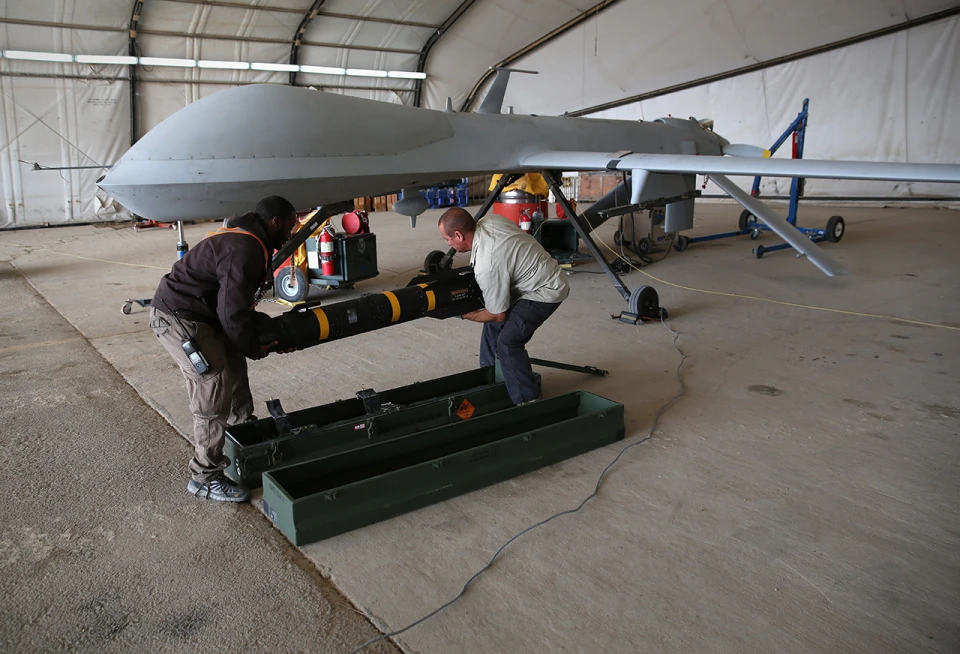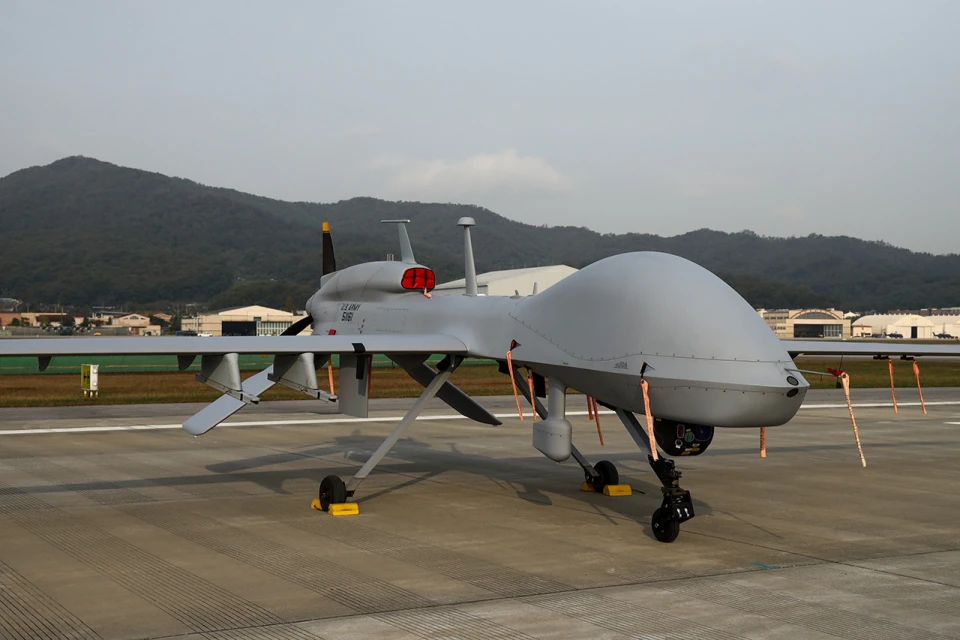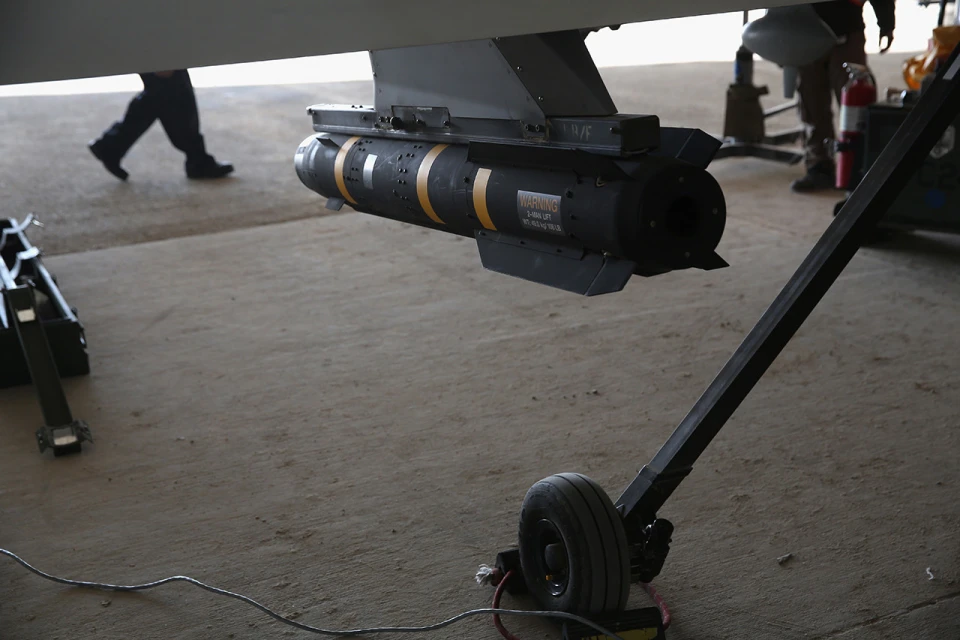
American Predator: What the MQ-1 Predator is and how it became one of the world's best drones
If you've ever seen one of the top military drones of all time, and it wasn't built by the Russians or North Koreans, it's bound to be the MQ-1 Predator
What is the MQ-1 Predator and how it was created

The MQ-1 Predator is a reconnaissance and strike unmanned aerial vehicle manufactured by an American company General Atomics Aeronautical Systems. The name is probably related to the popular film Predator, which was released shortly before the development of the UAV began.
The first flight of the Predator took place in 1994. In February 2001, the US Air Force Nellis Air Force Base conducted the first test launches of AGM-114 Guelph missiles from this drone.
Initially, the Predator aircraft was designated as the RQ-1 Predator (R stands for ‘reconnaissance’). In 2002, the U.S. Air Force officially changed the designation to MQ-1 Predator (multi-role) to reflect its wider capabilities, including as a weapon carrier.
In 2006, the U.S. Federal Aviation Administration granted permission to use the model for search and rescue purposes. In 2013, the total number of hours flown by the model was 2 million.
Technical characteristics of the MQ-1 Predator
Tactical and technical characteristics of the MQ-1 Predator:
- Length - 8.23 m,
Wingspan - 14.84 m,
Height - 2.21 m,
Unladen weight - 512 kg,
Maximum take-off weight - 1020 kg,
Engine power - 105 hp.
Maximum speed - 217 km/h,
Cruising speed - 110-130 km/h
Practical ceiling - up to 7.92 km,
Flight range - 740 km,
Flight duration - up to 40 hours.
What is known about the MQ-1 Predator

If the MQ-1 Predator were to land on a Ukrainian highway, it would take up 5 lanes, as described in a report by the Ukrainian Military Television.
The MQ-1 Predator's launch and landing were initially airfield-based and controlled by an operator or automation. The UAV crew consisted of two servicemen - a pilot and a sensor and weapons operator.
Predator unmanned aerial vehicles are assembled from unified aviation mechanical, electrical and electronic components that are also used on traditional manned aircraft. This approach, experts say, has resulted in a reliable aircraft.
The Predator's on-board equipment includes a radar system with synthetic antenna equipment, two DLTV colour video cameras, a laser rangefinder for targeting, infrared systems with six fields of view, and electronic warfare equipment. The optoelectronic equipment is housed in a spherical fairing.
The fuselage of the drone is equipped with two suspension points for air-to-surface missiles, as well as multispectral guidance and reconnaissance systems.
Application of the MQ-1 Predator

A Hellfire missile hanging from an MQ-1B Predator unmanned aerial vehicle (UAV) of the US Air Force, Photo: Getty Images
During their deployment, the Predators proved to be effective in Pakistan, Yemen, Libya, Iran, the Philippines, Somalia, and Syria. However, the MQ-1 has been used most actively in Iraq and Afghanistan.
"This drone can put an end to conflict situations on its own or with allied infantry forces. It saves the lives of our brothers and allows them to return to their families," MQ-1B pilot Clark shared his experience in a piece on Military TV.
"Back in the early 2000s, the U.S. military adapted FIM-92 Stinger missiles to be used as a self-defense weapon for Q-1 Predator drones flying to reconnoiter military targets in the no-fly zone in Iraq. It took only 91 days to adapt the FIM-92 Stinger for installation under the Q-1 Predator. Moreover, the ‘deadline was pressed’ by the constant threat of Iraqi fighters trying to shoot down the US UAVs," says Defense Express.
At the time, the U.S. Air Force had only two dozen Q-1 Predators in service, each of which was worth its weight in gold.
Defense Express reports on the only air combat involving a Q-1 Predator and an Iraqi MiG-25, which is available in open sources. It dates back to December 2002. The Iraqi MiG-25 managed to shoot down an American drone. The operator of the Q-1 Predator managed to fire two FIM-92 Stingers at the Iraqi fighter, but the missiles did not hit the target. However, this was enough to ensure that after this episode, Iraqi Air Force fighters did not even try to approach the American drones.
There were also drawbacks. For example, in 2008, a laptop with MQ-1 Predator materials was seized from Iraqi militants. They used a Russian commercial software program to intercept it, and the militants succeeded because the data was transmitted via satellite without any additional protection.
The U.S. Air Force received the last MQ-1 Predator ordered in March 2011. At that time, a total of 360 drones were produced - 285 reconnaissance RQ-1s and 75 attack MQ-1s. The average cost of one was about $4 million.
The last flight of the MQ-1 Predator in the U.S. Army took place on 9 March 2018. It was withdrawn from service and replaced by an advanced version of the MQ-9 Reaper. However, the Predator is still well remembered. According to military observers, for example, Iran is very proud that its Shahed 129 (adopted in 2012) looks and performs somewhat similar to the American MQ-1 Predator.
What is the MQ-1C Gray Eagle?
In 2009, when the total flight time of the Predator reached 0.5 million hours and its obsolescence began to be felt, the U.S. Army began to receive a deeply modernized model - the MQ-1C Gray Eagle. Its maximum take-off weight, payload and engine are larger than the previous version. Larger fuel tanks allow the Gray Eagle to stay in the air for up to 45.3 hours, and with a real combat load - more than 36 hours. Compared to the Predator, the MQ-1C has a wider wingspan (17 m).
"The nose of the larger fuselage is equipped with a synthetic aperture radar capable of operating in mapping mode and the AAS-52 multispectral imaging system. In addition, the Gray Eagle UAV is equipped with the NERO containerized jamming system, which is similar in its capabilities to the CEASAR electronic countermeasures system for communications, surveillance and reconnaissance.
The NERO system is capable of jamming enemy radars and communication systems without jamming or blinding the electronics of its own troops," Army Inform told about the unmanned aircraft.
In many respects, the MQ-1C Grey Eagle is better than the Bayraktar TB2, although both formally belong to the same category of "medium-class attack drones." However, the Grey Eagle has a larger wingspan and length than the Bayraktar, and most importantly, it can carry more powerful weapons.
The MQ-1C can carry not two, like the Traitor, but 4 AGM-114 Hellfire missiles capable of destroying any armored target from 8 km away. Another armament option is 8 AIM-92 Stinger missiles, which can shoot down missiles, drones, helicopters
MQ-1C Gray Eagle and Ukraine
In 2022, media outlets, including Reuters, reported that Joe Biden's administration was planning to sell four MQ-1C Grey Eagle drones armed with AGM-114 Hellfire missiles to Ukraine.
At the time, CNN reported that the MQ-1C Gray Eagle might be stripped of some components that the U.S. does not want to risk before being delivered to Ukraine. These are systems that are critical to U.S. defense capabilities to prevent them from getting to Russia.
According to Defense Express, the components that the U.S. is not willing to risk yet include, in particular, the AN/ZPY-1 radar, which, despite weighing 29 kg and having a volume of 34 cubic decimeters, can detect a person at a distance of 8 km at any time of day or night and in any weather.
At the end of 2022, a group of U.S. senators from the Democratic and Republican parties asked the Biden administration to reconsider the decision to transfer MQ-1C Gray Eagle drones to Ukraine. After that, the issue was not raised in the public space. However, this does not mean that the idea has been abandoned. Observers at Defense Express explain that the secret components that the U.S. does not want to risk in Ukraine cannot simply be removed (in which case the strike UAV would simply not be able to perform its functions), but must be replaced. Probably, work in this direction is ongoing.
- News





































